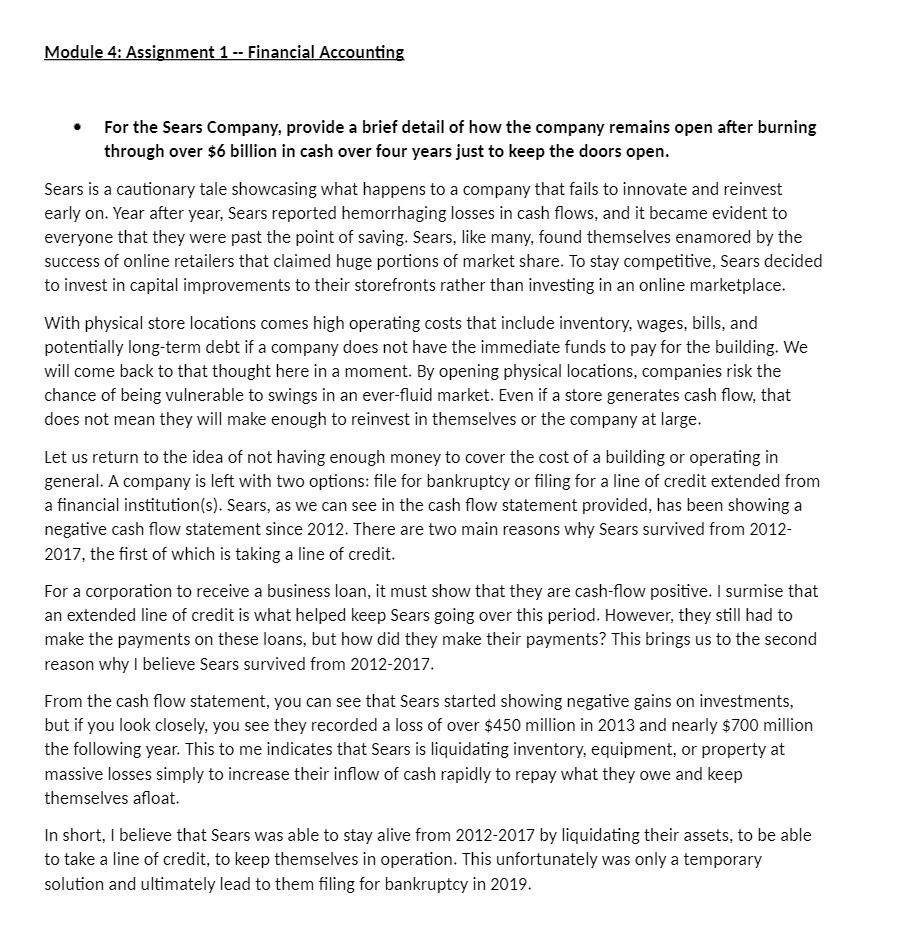Module 4: Assignment 1 Financial Accounting II For the Sears Company, provide a brief detail of how the company remains open after burning through over $6 billion in cash over four years iust to keep the doors open. Sears is a cauonary tale showcasing what happens to a company that fails to innovate and reinvest early on. Year after yea r, Sears reported hemorrhaging losses in cash ows, and it became evident to everyone that they were past the point of saving. Sears, like many, found themselves enamored by the success of online retailers that claimed huge portions of market share. To stay competitive, Sears decided to invest in capital improvements to their storefronts rather than investing in an online marketplace. With physical store locations comes high operating costs that include inventory, wages, bills, and potentially longterm debt if a company does not have the immediate funds to pay for the building. We will come back to that thought here in a moment. By opening physical locations, companies risk the chance of being vulnerable to swings in an ever-uid market. Even if a store generates cash flow, that does not mean they will make enough to reinvest in themselves or the company at large. Let us return to the idea of not having enough money to cover the cost of a building or operating in general. A company is left with two options: le for bankruptcy or ling for a line of credit extended from a nancial institutionlsl. Sears, as we can see in the cash ow statement provided, has been showing a negative cash ow statement since 2012. There are two main reasons why Sears survived from 2012- 2017, the rst of which is taking a line of credit. For a corporation to receive a business loan, it must show that they are cash-ow positive. | surmise that an extended line of credit is what helped keep Sears going over this period. However, they still had to make the payments on these loans, but how did they make their payments? This brings us to the second reason why I believe Sears survived from 2012-2017. From the cash flow statement, you can see that Sears started showing negative gains on investments, but if you look closely, you see they recorded a loss of over $450 million in 2013 and nearly $70110 million the following year. This to me indicates that Sears is liquidating inventory, equipment, or property at massive losses simply to increase their inow of cash rapidly to repay what they owe and keep themselves aoat. In short, I believe that Sears was able to stay alive from 2012-201? by liquidating their assets, to be able to take a line of credit, to keep themselves in operation. This unfortunately was only a temporary solution and ulmately lead to them ling for bankruptcy in 2019







